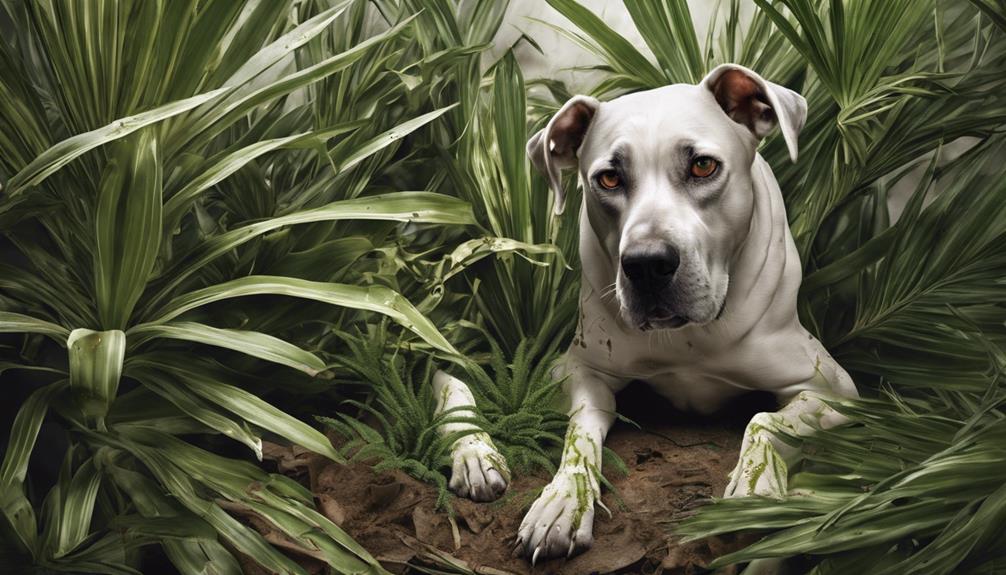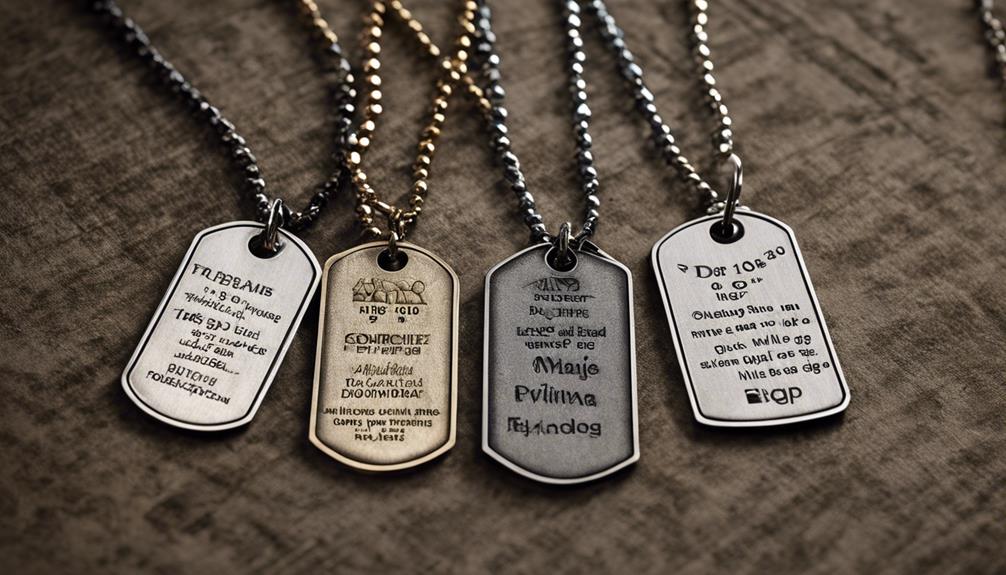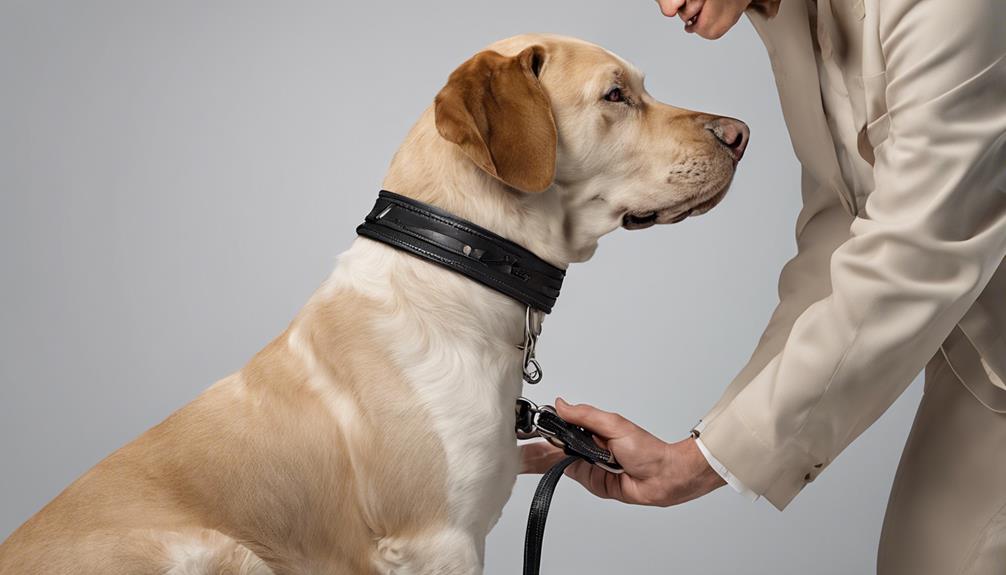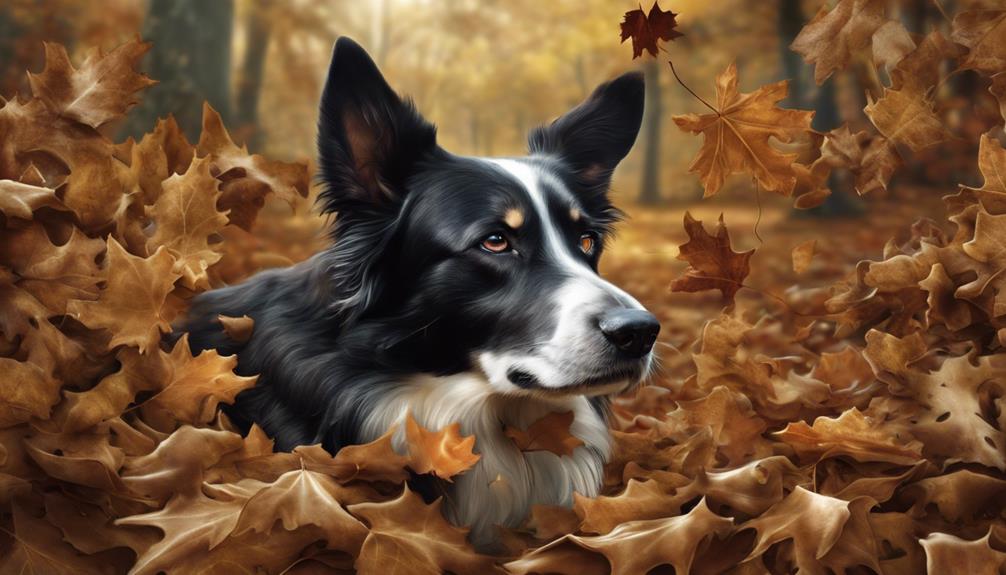Dracaena toxicity in dogs is caused by steroidal saponins in the plant, leading to symptoms like vomiting and diarrhea. Watch for signs such as excessive drooling and weakness, indicating poisoning. Immediate veterinary care is essential to prevent long-term organ damage. Treatment involves inducing vomiting, IV fluids, and activated charcoal. Recovery varies based on toxicity levels and prompt intervention. Prevent poisoning by keeping Dracaena out of reach, and opt for non-toxic plants. Veterinarians provide post-exposure care plans for monitoring. Costs for treatment range from $200 to $1,200. Proper care is vital for recovery, as poisoning is usually not lethal. More insights await.
Key Takeaways
- Dracaena toxicity in dogs is caused by steroidal saponins.
- Symptoms include vomiting, diarrhea, weakness, and ataxia.
- Prompt veterinary care is crucial to prevent long-term damage.
- Treatment involves inducing vomiting, IV fluids, and charcoal.
- Prevention includes keeping Dracaena out of pets' reach.
Understanding Dracaena Toxicity in Dogs
We must grasp the dangers of Dracaena toxicity in dogs, primarily caused by steroidal saponins found in the plant. Dracaena, a common household plant, can pose a significant risk to our furry companions due to its toxic properties.
When dogs ingest parts of the Dracaena plant, such as the leaves or stems, they may experience symptoms like vomiting. This reaction is their way of trying to rid their bodies of the harmful substances present in the plant.
Recognizing these signs of toxicity is vital in seeking prompt veterinary care to address the issue before it escalates. Understanding the potential dangers of Dracaena toxicity and being proactive in preventing access to the plant can help safeguard our pets' well-being.
Signs of Dracaena Poisoning in Dogs
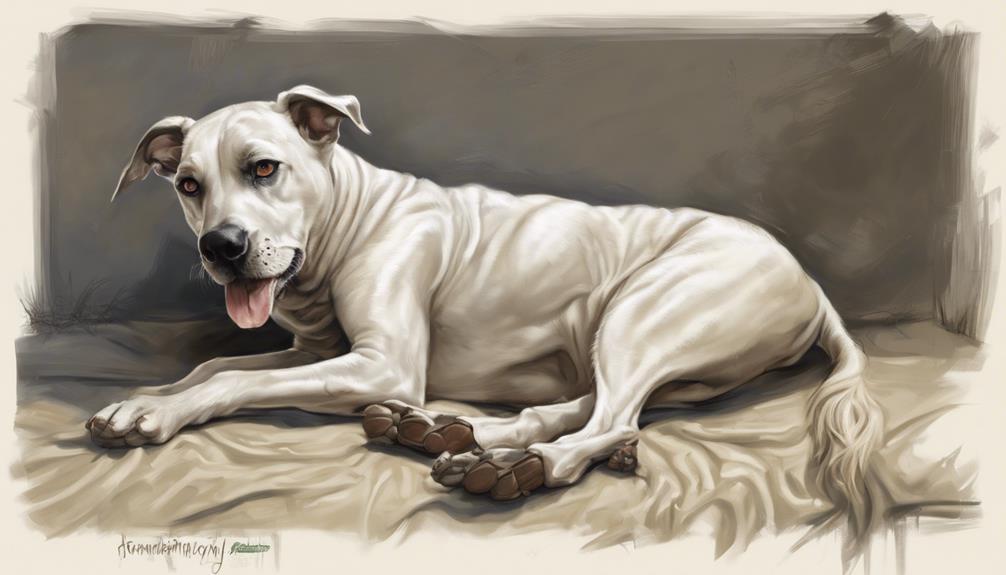
Dogs affected by Dracaena poisoning may exhibit symptoms such as vomiting, diarrhea, excessive drooling, and stomach/intestinal irritation. Anorexia, where dogs lose their appetite, can also be a sign of Dracaena toxicity. If your furry friend is feeling under the weather, you might notice weakness, depression, or ataxia, which is a lack of coordination.
Additionally, ingestion of Dracaena plants could lead to drooling, vomiting (which might contain blood), and changes in breathing sounds. In severe cases, tremors, seizures, collapse, incoordination, or dilated pupils may occur. Recognizing these signs promptly is essential. Quick identification and seeking veterinary care can prevent long-term organ damage in dogs exposed to Dracaena.
Causes of Dracaena Toxicity in Dogs
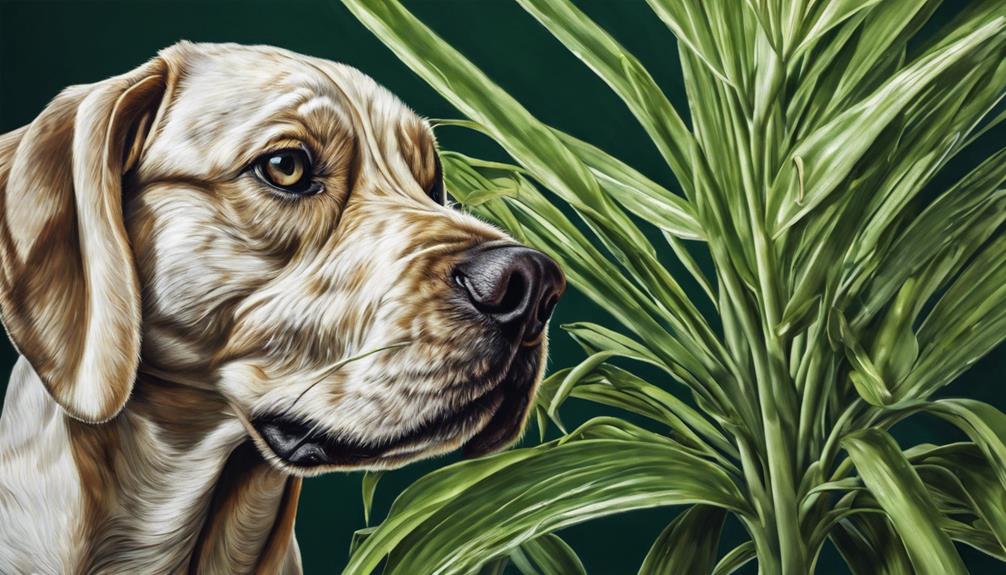
Dracaena toxicity in dogs is primarily caused by the presence of toxic compounds known as steroidal saponins in the plant. These compounds can lead to various symptoms such as gastrointestinal upset and weakness when ingested by our furry friends.
Understanding the reasons for Dracaena toxicity is essential in recognizing and addressing the potential dangers it poses to our canine companions.
Symptoms of Toxicity
Symptoms of toxicity in dogs caused by Dracaena primarily manifest as gastrointestinal issues such as vomiting, diarrhea, drooling, and stomach irritation. If your furry friend has ingested Dracaena, you might notice these signs along with ataxia, where they may seem uncoordinated or have trouble walking. Anorexia, or loss of appetite, can also occur, leading to reduced food intake.
Keep an eye out for weakness and potential blood in vomit, which could indicate a more critical reaction. If you observe any of these symptoms, seek veterinary assistance promptly. Remember, early detection and treatment are essential in managing Dracaena toxicity in dogs and preventing further complications. Your pet's well-being is our top priority!
Treatment Options
Upon encountering Dracaena toxicity in dogs, addressing the treatment options becomes imperative to alleviate the effects of the plant's toxic compounds on canine health.
Immediate treatment is essential when poisoning symptoms manifest. Veterinarians typically recommend fluid therapy to help flush out the toxins from the dog's system. This treatment aids in restoring hydration levels and promoting toxin elimination.
In severe cases, additional supportive care may be necessary to manage symptoms such as vomiting, diarrhea, and weakness. The presence of steroidal saponins in Dracaena plants necessitates prompt action to prevent further complications.
Diagnosing Dracaena Poisoning in Dogs
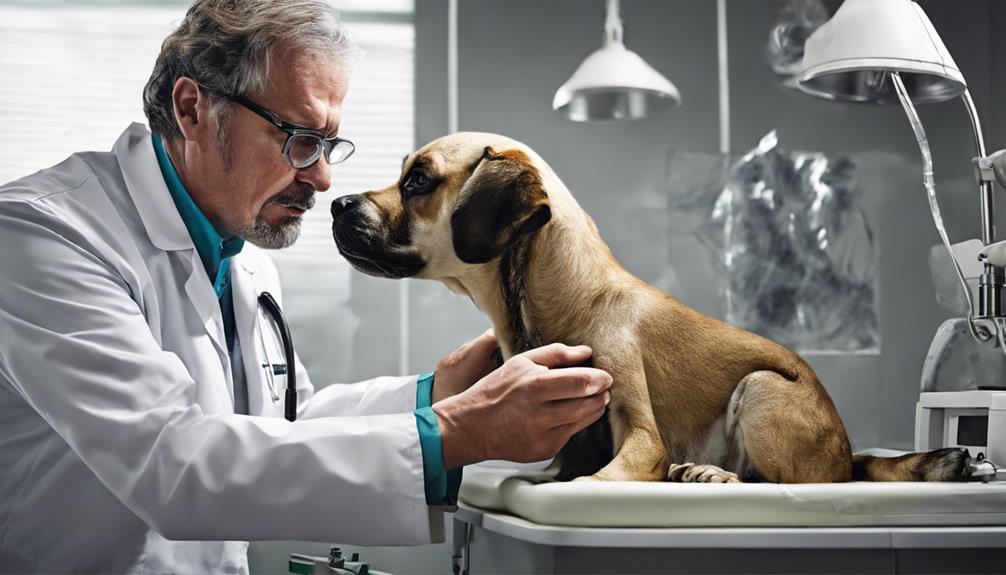
When a dog shows symptoms like vomiting, diarrhea, or weakness, a trip to the vet is essential.
The veterinarian will conduct tests like blood work and a urinalysis to assess the extent of Dracaena poisoning.
Identifying the plant your dog ingested is important for the right treatment and care.
Symptoms to Watch for
If a dog has ingested Dracaena plants, we may notice a range of signs that could indicate poisoning. These symptoms include vomiting, diarrhea, weakness, ataxia (lack of coordination), and anorexia (loss of appetite).
Observing these signs is vital as they can help in identifying if the dog has been affected by Dracaena toxicity. Additionally, dogs might display abdominal pain, depression, and overall weakness after consuming these plants.
Paying close attention to any unusual behavior or physical changes in your dog if you suspect they've ingested Dracaena is crucial. Early recognition of these symptoms can lead to prompt treatment, potentially preventing more severe consequences down the line.
Veterinary Care Needed
For diagnosing Dracaena poisoning in dogs, veterinary care is essential. A thorough physical examination by a veterinarian is the first step in the diagnosis process. This examination helps identify specific symptoms and assess the overall health of the affected dog.
Additionally, blood work, including a complete blood count (CBC) and chemistry panel, is vital for evaluating the extent of Dracaena poisoning. The CBC can provide insights into potential issues such as anemia or infection, while the chemistry panel helps assess organ function. In some cases, a packed cell volume (PCV) test may be conducted to determine dehydration levels.
Proper veterinary care, including these diagnostic measures, is necessary for effectively treating Dracaena poisoning in dogs.
Treating Dracaena Toxicity in Dogs
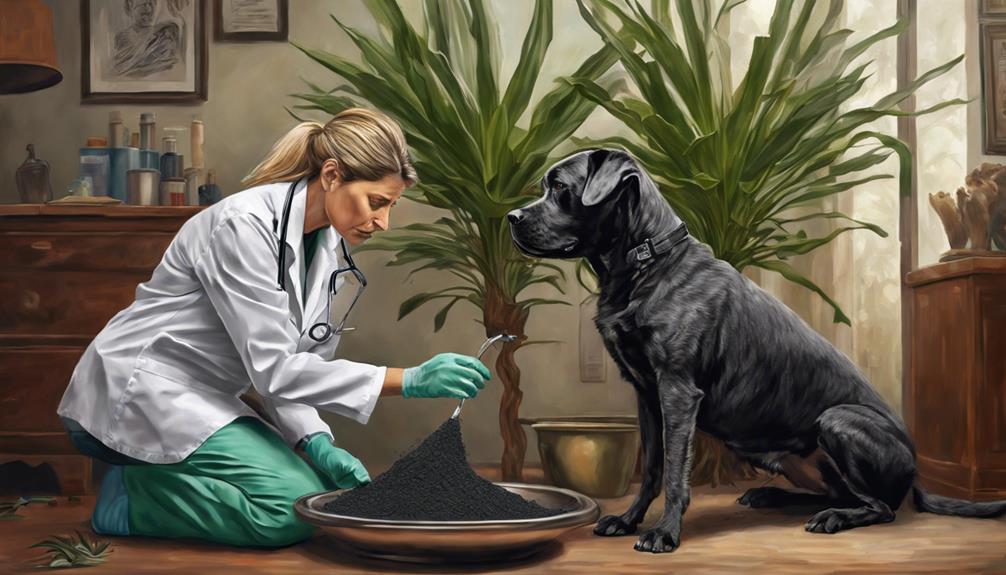
To address Dracaena toxicity in dogs, treatment often involves inducing vomiting to eliminate plant material from the system. When dealing with this issue, it's important to act swiftly and decisively.
Here are three key steps in treating Dracaena toxicity in dogs:
- Inducing Vomiting: This helps expel any remaining plant material and toxins from the stomach, preventing further absorption into the body.
- IV Fluids: Administering intravenous fluids can combat dehydration caused by vomiting and diarrhea, helping to stabilize the dog's condition.
- Activated Charcoal: This substance aids in absorbing any lingering toxins in the digestive tract, reducing their harmful effects on the body.
Recovery From Dracaena Poisoning in Dogs
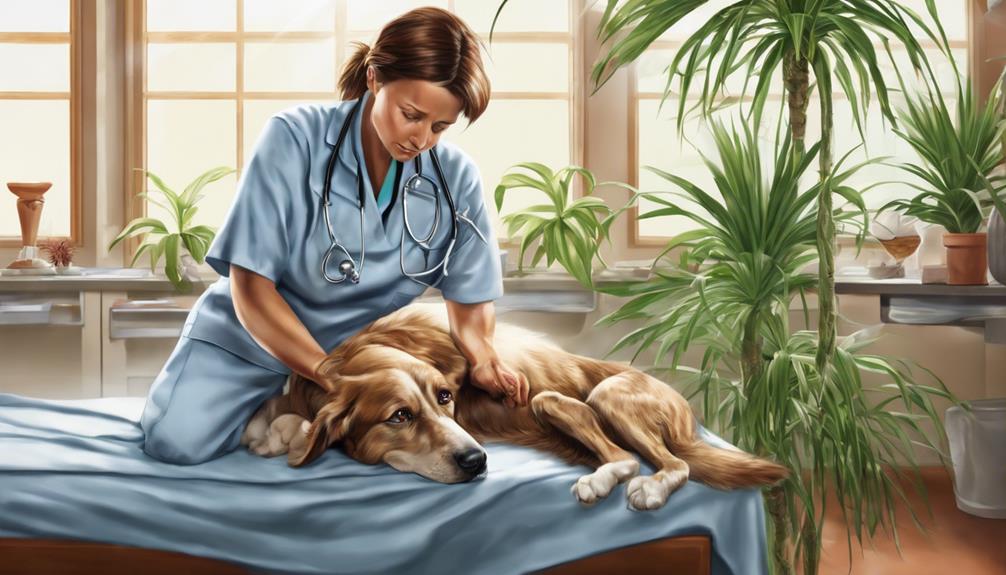
After treating Dracaena toxicity in dogs, the recuperation process is vital for guaranteeing the dog's full recovery and well-being. Recovery from Dracaena poisoning varies depending on the level of toxicity the dog was exposed to and how quickly they received prompt medical intervention.
Some dogs may bounce back with at-home supportive care, while others might need to stay at the hospital for closer monitoring and intensive treatment. Timely treatment plays a significant role in preventing long-term organ damage and complications that could arise from the poisoning.
During the recovery period, it's essential to keep a close eye on the dog's progress to ensure their well-being. Follow-up visits with the veterinarian may be necessary to assess the dog's response to treatment and make any adjustments as needed.
Veterinary Insights on Dracaena Poisoning
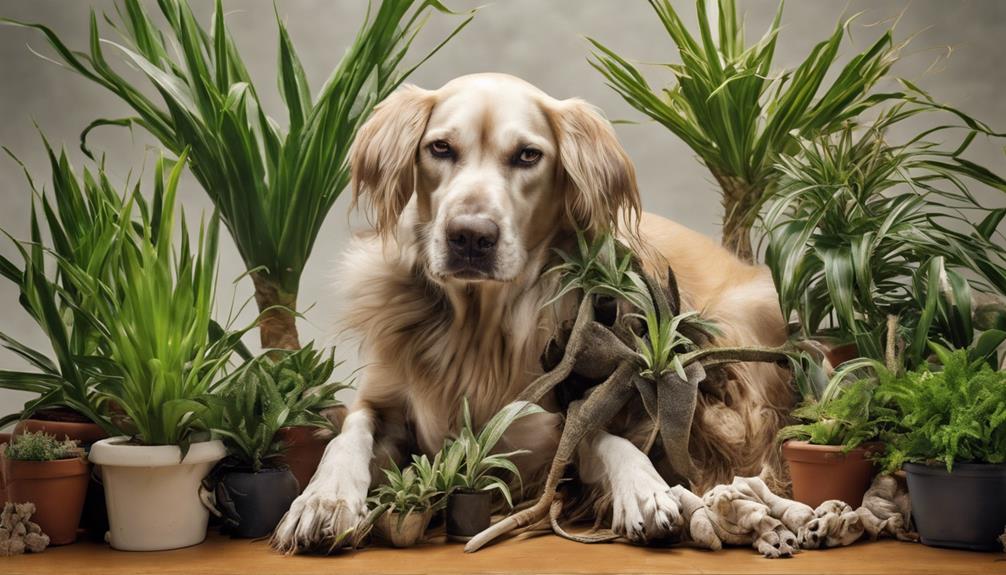
Veterinarians provide invaluable insights into the diagnosis and treatment of Dracaena poisoning in dogs, offering essential expertise in managing this toxic plant exposure. When it comes to dealing with Dracaena toxicity, veterinary professionals play a significant role in guaranteeing your furry friend receives the care they need to recover. Here are some essential insights from veterinarians on Dracaena poisoning:
- Symptom Management: Veterinarians are skilled at identifying and addressing symptoms like vomiting and diarrhea in dogs exposed to Dracaena. They can recommend appropriate treatments such as fluid therapy to help your pet feel better.
- Preventive Measures: Veterinary professionals can advise on preventive measures to keep your dog safe from Dracaena poisoning. Simple steps like keeping the plant out of reach and creating pet-free zones can go a long way in avoiding potential toxic exposures.
- Ongoing Veterinary Care: In cases where dogs require ongoing monitoring post-exposure, veterinarians provide tailored care plans to support their recovery. Regular check-ups and follow-up appointments can guarantee your pet's well-being in the long run.
Warneckii Dracaena Poisoning Overview
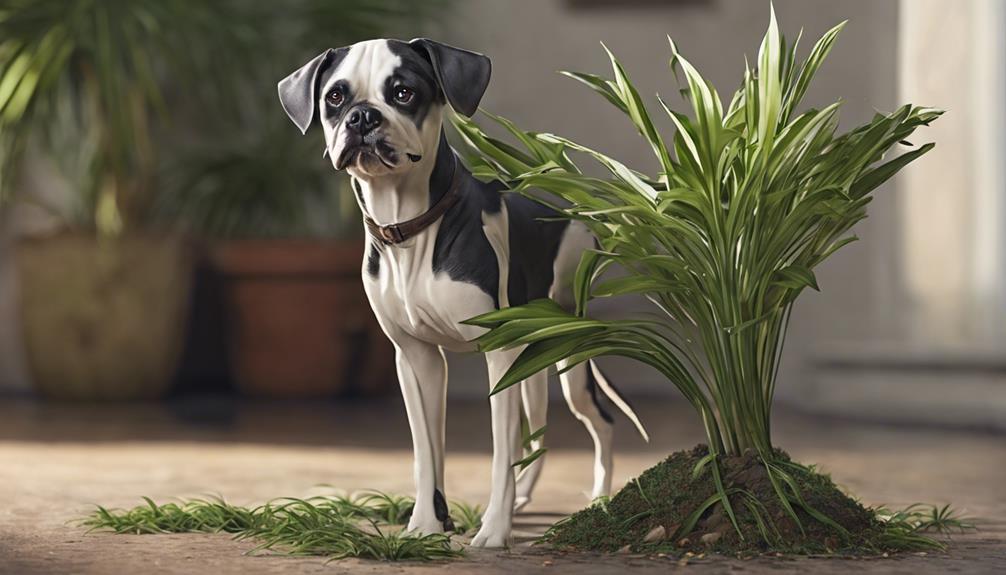
Warneckii Dracaena, a common houseplant, contains toxic saponins known to cause gastrointestinal distress and coordination issues in pets. When pets ingest parts of this plant, it can lead to poisoning, requiring immediate attention. To help you understand the impact of Warneckii Dracaena poisoning, let's explore the overview using the key points below:
| Aspect | Details |
|---|---|
| Poisoning | Warneckii Dracaena can result in toxic effects on pets. |
| Symptoms | Gastrointestinal distress, coordination issues, and weakness. |
| Treatment | Costs range from $200 to $1,200 for addressing poisoning effects. |
| Pets | Dogs and cats may experience symptoms if they ingest the plant. |
| Severity | While usually not lethal, veterinary care is essential for recovery. |
Being aware of these details can help you take quick action if your pet shows signs of Warneckii Dracaena poisoning. Remember, prompt treatment is vital to ensuring your furry friends recover swiftly from such incidents.
Symptoms of Warneckii Dracaena Poisoning

Experiencing symptoms of Warneckii Dracaena poisoning in dogs, such as abdominal pain and weakness, demands immediate veterinary attention to guarantee proper care and treatment. These symptoms can vary in severity, and it's vital to recognize them early on to make certain your pet receives the necessary care.
Here are some common signs to watch out for:
- Vomiting and GI upset: If your dog starts vomiting or showing signs of gastrointestinal distress, it could be a red flag for Warneckii Dracaena poisoning.
- Abdominal pain: Dogs experiencing abdominal pain may exhibit discomfort, restlessness, or even vocalize their distress.
- Diarrhea and excessive drooling: Keep an eye out for changes in your dog's stool consistency and an increase in drooling beyond normal levels.
Being attentive to these symptoms can help you act promptly and seek veterinary assistance to address any potential poisoning issues.
Management of Dracaena Marginata Toxicity
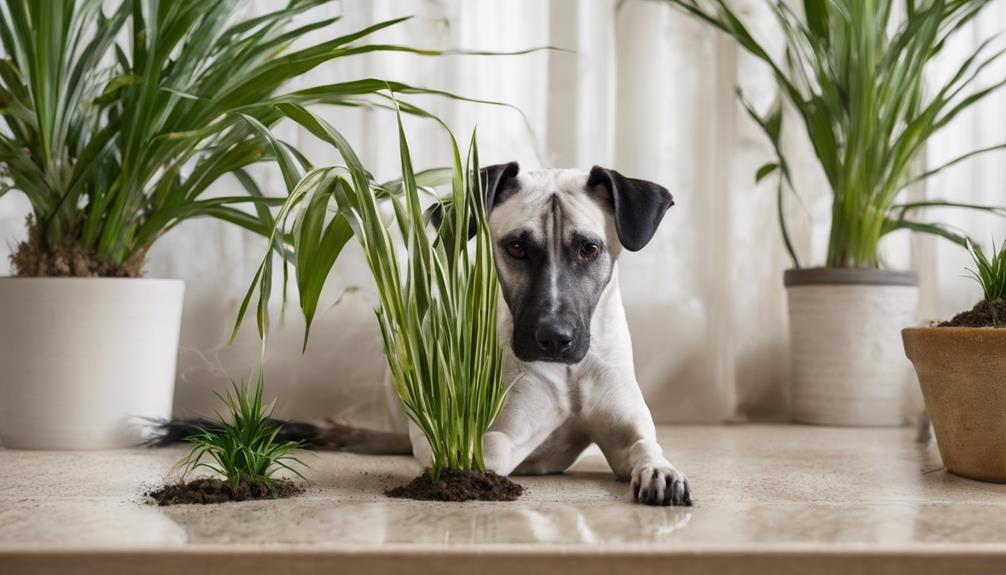
Upon encountering symptoms of Dracaena Marginata toxicity in dogs, immediate action is essential to mitigate potential health risks and guarantee proper care for the affected pet. If you suspect your dog has ingested Dracaena Marginata or come into contact with it, observe for symptoms like vomiting, diarrhea, and excessive drooling.
To manage Dracaena Marginata toxicity, start by removing any remnants of the plant from your dog's mouth to prevent further ingestion. Offer water to help clear any remaining plant bits and soothe the digestive system.
Prevention is vital to avoiding such incidents in the future. Choose non-toxic plants for your home, keep toxic plants out of reach, use physical barriers if needed, train your dog to avoid plants, and educate everyone in your household about safe plant options.
Frequently Asked Questions
How Toxic Are Dracaena to Dogs?
Dracaena plants pose a toxic risk to dogs due to steroidal saponins, causing digestive issues. Ingesting small amounts can trigger vomiting, diarrhea, weakness, and ataxia. The toxicity level varies depending on the consumed quantity and the dog's size, with small breeds and puppies at higher risk.
Immediate vet attention is essential to address Dracaena poisoning in dogs, preventing severe symptoms and ensuring a speedy recovery.
How Long Does Plant Poisoning Take in Dogs?
Plant poisoning symptoms in dogs can show up within minutes to hours after ingestion, depending on the toxin and amount consumed. Mild signs like drooling may appear quickly, while severe reactions could take longer to manifest.
Early symptoms may indicate a fast-acting toxin, while delayed ones may suggest a slower-acting poison. Monitoring for any signs of plant poisoning post-ingestion is crucial to guarantee timely veterinary care for our furry friends.
Are Red Edged Dracaena Toxic to Pets?
Yes, red edged Dracaena plants are toxic to pets, including dogs. Ingesting these plants can cause symptoms like vomiting, diarrhea, and drooling in our furry friends.
If a dog comes into contact with or consumes red edged Dracaena, they may experience gastrointestinal distress and discomfort.
It's important to seek immediate veterinary care if your dog ingests this plant to prevent serious health complications.
Is Song of India Toxic to Dogs?
Yes, Song of India, also known as Dracaena reflexa, is toxic to dogs if consumed. Symptoms like vomiting, diarrhea, and drooling can occur due to harmful compounds like saponins in the plant. Immediate veterinary care is vital if ingestion happens to prevent severe symptoms.
Keeping Song of India out of reach of pets is necessary to avoid toxicity risks.
Conclusion
To wrap up, it's crucial to keep your furry companions safe from the dangers of Dracaena toxicity. Remember to keep these plants out of reach and seek immediate veterinary care if you suspect poisoning.
It's better to be safe than sorry when it comes to the health and well-being of your beloved pets. Stay informed and proactive in preventing potential hazards in your home.
Your four-legged friends will thank you for it!
